Key takeaway: Create custom live chat greetings that are designed to trigger when your visitors’ actions signal that they’re considering abandoning their cart.
The internet has changed the way we buy, beyond all recognition. Before
e-commerce, we shopped using three distinct channels:

In person

Over the phone

Via mail order
Of those channels, two required the customer to engage with a real, live person. This meant more opportunities to convert on-the-fence customers. If they were in our store, we could approach them. If they had a question, they would approach us. Today, that same on-the-fence customer might place items in their basket, get distracted or change their minds, and leave, potentially never to be seen again.
The absence of human relationships in web-based transactions means that identifying and engaging those customers who just need a gentle push before they buy is far more difficult.
You need to know more than how to sell (although that’s still very important); you need to understand how consumers behave online, and you need enough technical know-how to implement systems that help highlight when a customer should be approached.
Get all that right, and live chat can have a
significant impact on your bottom line.
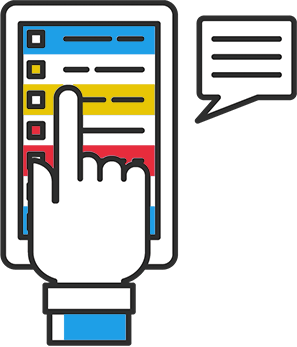
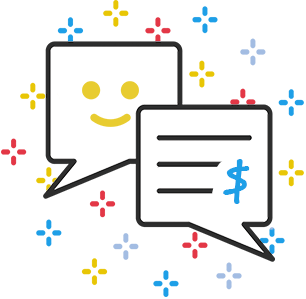
In a test conducted by one of Monetate’s e-commerce clients, it was found that live chat increased the average order value of sales by 3% (equating to a predicted $130,000 in extra revenue over a year).
Similarly, VWO reported that after implementing live chat, its customer eztexting saw signups increase by 31%
This all makes sense, since the general consensus from consumers is that they love live chat.
According to stats reported by SoftwareAdvice, 49% of respondents prefer using live chat for online shopping questions. Regardless of the nature of the question, 56% of respondents aged 18 to 34 prefer live chat to phone, compared to 27% of respondents aged 35 and older.
Regardless of the nature of the question, 56% of respondents aged 18 to 34 prefer live chat to phone, compared to 27% of respondents aged 35 and older.


These stats are
significant, and the
general takeaway is this:
No matter who your customer base is, there’s a very good chance some of them will want to reach you via live chat. Consequently, if you don’t offer them the option of using it, they could be going elsewhere and you could be losing sales.
Of course, implementing a live chat function on your site isn’t enough— you have to know how to use it. This exhaustive roundup of practical tips and tactics will help you learn how.
CONTENTS
Best practices for running a live chat
- 1. Empathize
- 2. Use positive language
- 3. If in doubt, ask questions
- 4. Don’t handle too many chats at once

Practical tactics to increase conversions
- 1.Create proactive greetings
- 2.Use simple pre-chat forms
- 3.Increase your response time
- 4.Display unsent messages to agents
- 5.Have meaningful conversations with customers
- 6.Boost profits with upsells
- 7.Develop relationships by downselling
- 8.Ask customers to engage with you on social media
- 9.Leverage your historical data
- 10.Extend your live chat hours
- 11.Display a picture of the agent
- 12.Identify problems with your site
- 13.Use before sending out an abandonment email
- 14.Include live chat in your abandonment emails
- 15.Offer live chat in multiple languages
- 16.A/B test everything
- 17.Live chat for growth hacking

Checklist of Takeaways
1. Empathize
Ask your agents to put themselves in the customer’s shoes— every time. If they’re making a complaint, are frustrated because there’s a problem with the site, or an item they want to buy is out of stock, the customer might be a little “difficult” to deal with.
Instead of taking the customer’s attitude personally, the agent should put themselves in their position. They should communicate the fact that they understand the customer’s problem, and that they’re going to find a way to put things right.
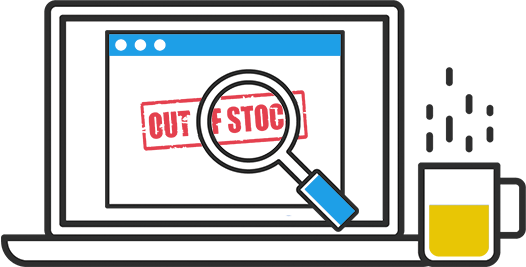

2. Use positive language
This one might seem obvious, and that’s because it is. You need to be positive in customer service and sales. That’s hardly groundbreaking information.
But while you probably know you need to be positive, ensuring that you communicate using nothing but positive words and phrases is harder than you might think. It’s easy for words like “no” and “can’t” to slip into conversation, but these have negative connotations for the customer and will immediately put them on the defensive.

When a customer asks a question you can’t answer, don’t say,


“I don’t know.”

Instead, say,


“Good question, let me find that out for you right now!”

Similarly, if a customer inquires about an item that’s currently out of stock, instead of saying,


We don’t have this item and it won’t be available for about two weeks, until the next supply.

Say,


“This product will be available within two weeks. I can place your order and make sure it will be sent to you as soon as it gets to us.”

Mastering the art of speaking entirely in positive language takes time. Provide your agents with relevant training and encourage them to read all communications back to themselves before they hit send, not just to identify typos and spelling mistakes, but to ensure appropriate, positive terminology has been used.
3. If in doubt, ask questions
It’s natural for customer service agents to want to avoid asking questions. It can be a sign they’re not doing their jobs properly, and that’s something they won’t want the customer or their team leader or manager catching on to.
Unfortunately, in the long run, failure to ask questions only makes the situation worse.
Encourage your agents to request clarification whenever they’re unsure what the customer is asking, or what they want. A small frustration for the customer in the present could prevent a much bigger problem later on when they don’t get what they wanted or were expecting.

Instead of saying,


“I’m not sure what you’re asking. Can you explain your question again, please?”

Say,


“To ensure I find the very best solution for you, can you explain your question in a little more detail, please?”


4. Don’t handle too many chats at once
Your agents don’t have superpowers. You can’t expect them to cope with endless chats simultaneously. There has to be a cut-off point, because after a certain number of chats the level of service an agent can offer customers is going to drop, while the chance of that agent making errors is going to increase.
The general rule for the industry is five chats per agent; however, the complexity of each chat, the speed at which the customer replies to messages, and the skill level of the agent will all affect this.

5. Communicate
Be honest. If you need time to find something out, tell the customer. Don’t keep them waiting without telling them what’s going on.
While the customer would probably rather not wait for a response at all, they’re going to feel much more positive about an interaction in which the agent kept them informed, than one in which they were left wondering what was going on.
Again, ensure the language used is 100% positive.

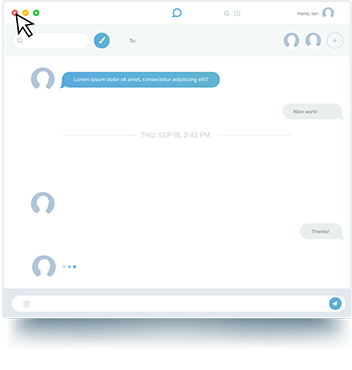
6. Don’t close a chat prematurely
Before an agent ends a chat with a customer, they should always make sure of two things:
- The customer is happy with the outcome of their initial query.
- They don’t have any more questions.
While a busy agent might feel inclined to end a conversation as quickly as possible, that’s a big mistake. If the customer feels their query hasn’t been resolved to their satisfaction, they’re going to be unhappy.
The best-case scenario is that the customer starts another chat; that’s use of agent time that could have been prevented, but at least it’s a chance to put things right.
Worst-case scenario? The customer simply takes their business elsewhere.
7. Provide a transcript
One of the advantages of live chat over phone support for customers (and companies) is the option to acquire and keep a record of all conversations.
Unfortunately, not all companies extend this feature to their customers.
If you can offer it, do.
Not only is it a positive for the customer (which helps to finish the conversation on a high note), it provides the customer with valuable information they can refer back to. This may negate the need for the customer to contact your support team about a similar issue in the future, and why wouldn’t you want that to happen? It saves everyone time.


1. Create proactive greetings
“Greetings” is industry lingo for the messages that pop up when a live-chat box first appears. Despite their personalized tone, there of course isn’t anyone typing out a welcome note and hitting send. It’s all automated. How you automate it, though, makes a world of difference.
Timing is everything.
This post from Kissmetrics says your “basic greeting” should:
- Have the “time on website” trigger set to “equal to or greater than the average time to completion of CTA/form.” That is, don’t distract people before you’ve given them a chance.
- If you don’t have a user login area on your site (i.e., no existing customers), set a greeting to returning visitors starting with “Welcome back.”
- If you do have a login section for existing customers, don’t show chat on any page where they can access it (unless you are providing customer support, which is a totally different ball game).
There are a number of other conversion-optimizing live chat “triggers” you might want to use— just remember to adjust the greeting the visitor sees in accordance with what action or series of actions is triggering it.

Try these tactics
- Send a greeting when a customer is on a decision-making page; for example, a “product, pricing, or promotion page.”
- Greet customers who have arrived on your site via some sort of advertising, like AdWords, or even a link you’ve had placed on another site. The source of their referral will provide a clue as to their reason for visiting, which means you can target your greeting accordingly.
The advantage of this is that you can essentially turn every page on your site “into a prospective landing page.” specifically lead-gen landing pages, which are used to collect user information that will enable you to market to and connect with the prospect at a later time.

Promotional company Blue Soda achieved an incredible 60% live chat to conversion rate when it adjusted how its live chat conversations were being triggered.
Through analysis of its customers’ on-site history, Blue Soda was able to identify the pattern of signals its visitors tended to display when they had a problem or question, or were uncertain about a purchase they were considering.
This enabled the company to implement a system that triggered a chat when certain criteria had been met.
Let’s look at some more triggers you could try out once you get live chat
set-up on your own site.
- Time on siteA blanket rule that targets everyone. The greeting appears after a visitor has been on the site for a set amount of time, regardless of any other circumstances.
- Returning visitorThe greeting appears when a previous visitor returns to your site.
- Time on pageIf you’ve been paying attention so far, you’ll be familiar with this one. This greeting appears after a certain period of inactivity on a particular page.
- GeolocationGeolocation targets visitors with a custom greeting according to their location. For example, you might point out to visitors in certain states that for them, shipping will be free.
- Page viewsThe greeting appears when a visitor keeps returning to the same page— for example, a product page.
- ReferrerThe greeting appears when a visitor lands on the site via a particular referral link. You might use this if you’ve advertised an offer on another website.
- Visited URLsThe greeting is triggered after users have visited all URLs in a specific group of pages; for example, a number of different, yet related products. This would signal that the customer is having problems deciding between them.
Key takeaway: Send proactive greetings that are personalized according to how a customer arrived on your site or how they’re interacting with it.
2. Use simple pre-chat forms
Pre-chat forms let you gather important information about the customer like their name and email address. You can use this information in the future to nurture leads.
The forms can also help prepare your agents for the conversation ahead. Utilized correctly, that means better customer service and increased conversions.
A pre-chat form should be very short and simple, with three boxes maximum:
- Name
- Email address
- Reason for chat
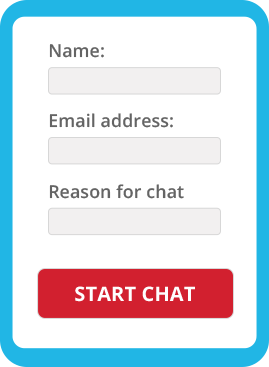
“In its post “9 Companies Using Live Chat,” HubSpot highlighted an example from cleaning service Maids in Black, which dropped the “name” box to create a pre-chat form that asks for just two pieces of information:
- Email address
- Reason for chat/question
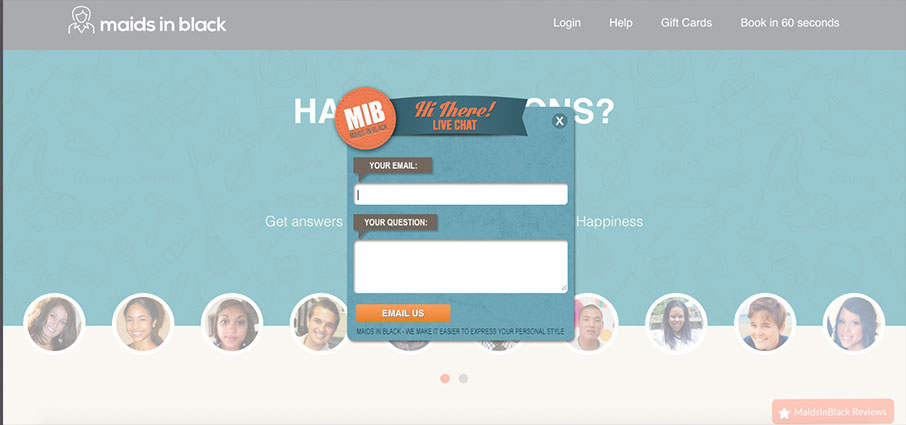

As HubSpot said:
“Keeping the form short with only a couple fields eases the path to engagement for visitors while also allowing the Maids In Black team to route chats and emails to the appropriate teams.”
In other words, the pre-chat form exists to ensure the company can offer the best
possible service to the customer.

Sounds like a no-brainer, right?
Not everyone agrees.
This post on Quora highlights some interesting counter arguments, while Błażej Szperliński of Text United summarizes the pros and cons.
- Less barriers
 More chats
More chats - Less barriers
 Less information about visitors
Less information about visitors - Less barriers
 Worse conversion rates.”
Worse conversion rates.”
What Szperliński is saying is that while a pre-chat form might reduce the number of chats visitors initiate, the fact that only “serious” customers are likely to use the feature means the general quality of those chats should increase. Beyond that, there’s no denying the fact that the information visitors provide in pre-chat forms is crazy valuable, and could help you drive conversions later down the line.
Key takeaway: Split test adding a short (three cells at most) pre-chat form that visitors have to complete before commencing a chat. Note that this will likely reduce the number of live chats visitors initiate - that’s okay, so long as your conversion rate increases at the same time.
3. Increase your response time
It goes without saying that you need to respond to customers who interact with you on live chat quickly— but it might surprise you just how quick you need to be.
A report from Zendesk stated that “a 30-second reply time was the magic number to provide their customers with the best experiences,” and “if you can’t get back to a customer in 30 seconds, you’re probably handling too many chats.”
To clarify, after a 30-second wait, customer satisfaction begins to fall. As that wait approaches 150 seconds, satisfaction drops dramatically.

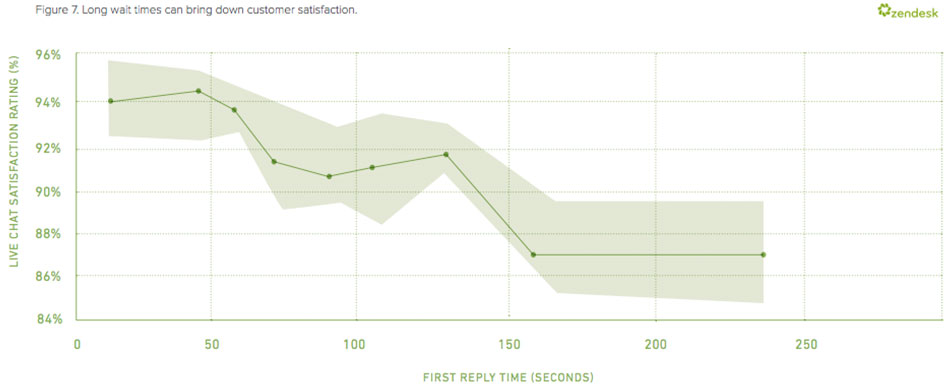
An article from Intercom compares making customers wait to speak to a live chat agent to putting a telephone customer on hold.
“At this point you’re only one step away from playing cheesy on-hold music. Some products force you to wait before you can even tell them why you’re there in the first place. This is slavery to the worst part of the phone experience.”

It’s a fair comparison, and an important one, too. Live chat is supposed to mitigate the frustration that’s synonymous with telephone customer support. If you’re placing people into queues, something’s going wrong.
Let’s look at ways you can speed things up.
Use pre-written replies
Create pre-written replies to respond to common queries that agents can send within a couple of seconds using shortcodes.
Transfer chats when necessary
If an agent is too busy dealing with a particularly demanding or chatty customer, and is struggling to give all their current chats the attention they need, they can transfer a chat to another agent.
This feature is also useful for less experienced agents. If they’re being asked difficult questions that they’re unable to answer, rather than make the customer wait while they go back and forth to find answers, they can just switch the chat over to a more experienced agent.
Limit the number of chats each agent is responsible for
It should go without saying that the more conversations an agent is engaged in, the longer it will take to reply to each customer. We covered this already, but as a reminder, agents should be engaged in a maximum of five conversations at a time.
Train your agents properly
Needless to say, the better trained your agents are— the more they know about your product and your website, and the more experience they have with customer service and using live chat— the faster they will be able to deal with customer queries.
Key takeaway: Play it safe and aim to respond to all live chat interactions
within 30 seconds.
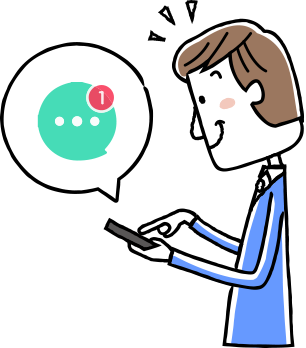
4. Display unsent messages to agents
“Your live chat agents should be able to see what customers are typing while they type it. It not only gives the agents insight to what the customers are thinking as they type, but it allows the alert chat agent to respond more quickly with an answer.” 25 Live Chat Tips
It might feel slightly sneaky to watch what someone’s typing without their knowledge, but it benefits you both.
It’s another way to speed up response times, since agents can plan their reply before customers even hit send. That means agents are afforded extra time to think up better replies, replies that are more helpful to the customer, or replies that are devised to drive conversions. Either way, for a tactic that’s as quick and easy to carry out as switching on a setting, implementing it is a no-brainer.

Key takeaway: If your live chat service offers a typing indicator, use it.
5. Have meaningful conversations with customers
“Send more messages: a long response time can be mitigated with a quality chat.” Alex Birkett, How to Make Live Chat Convert
We know that responding to customers promptly is critical if you want to make live chat work. You could be forgiven, then, for thinking that conversations should be wrapped up as quickly as possible.
In some cases that might be a true. In others, you could be missing out on a great opportunity to build a rapport with customers, increasing their satisfaction.
Zendesk found a direct correlation between the number of messages in a conversation and how satisfied customers were with the conversation’s outcome. Twenty messages appears to be the sweet spot.

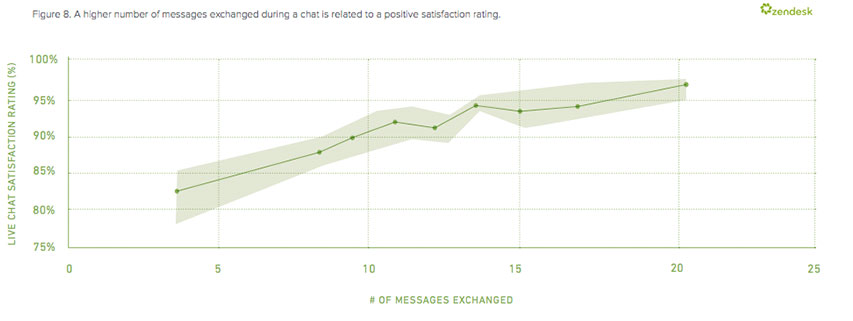
Your agents are going to have to make a bit of a judgement call here. Some customers will want their problem dealt with as quickly as humanly possible— pleasantries and supplementary information will just frustrate them. If a customer acts uninterested in engaging beyond the bare essentials, don’t push them.

Correlation does not equal causation
It’s well worth noting that the data above is, as pointed out by Birkett, only a correlation.
“Now, there could be many reasons for this— it’s just a correlation. But if you could pull a ‘best practice’ from this, it would be to provide full and thorough answers (and while you’re doing so, gather customer data).”
We can safely say that simply sending more messages is not going to lead to higher customer satisfaction. What we can take away from this is that longer conversations provide customers with more of the sort of stuff that’s going to send them away happy.
Key takeaway: It’s important to respond to customers promptly, but that doesn’t mean you should rush each conversation to a close. Take the time to ensure each customer has had all their questions answered, and is completely satisfied with the outcome of the conversation, before saying goodbye.
6. Boost profits with upsells
Upselling is the process of getting customers who are ready to convert, or have already converted, to spend more. It’s a foolproof means of boosting revenue, in large part because it’s generally easier to get an existing lead to spend more than it is to get a new lead to convert.
“After you demonstrate value and make the case for a higher level of customer service, you can try increasing conversions via upselling. Once the agent has engaged visitors by understanding their needs, they are in a better position to recommend upgrades, add-ons, etc.” 7 Ways To Use Live Chat For Improved Conversions, Dan Virgillito
An example of something similar in the physical world would be when a cashier at the store asks if you’d like to make an additional purchase by taking advantage of a “special offer.”
Note that it’s always low-value products on offer, for obvious reasons— it’s easier to justify an impulse purchase when it’s only a few dollars.


Relax the customer
Make the customer feel comfortable by:
- using the customer’s name,
- using positive language (and avoiding negative language),
- being attentive to the customer’s needs.
- being genuinely helpful and providing genuinely helpful advice (bonus points for offering advice that is little-known), and
- being honest.
These will help to build trust and rapport with the customer, which in turn boosts their receptiveness to your attempts to upsell.
Learn about
each customer's needs
The more you know about your customer’s wants and needs, the easier it is to upsell. The reason why is simple: you’re better able to match an appropriate upsell to the customer.
To effectively learn about your customer, you need to ask the right questions. The “right questions” will be determined by the needs of your business. However, to generalize a little, as an example, agents for B2B companies should try to learn
- the size of the business the customer they’re talking to is representing;
- if their company has ever done business with you before;
- if their company has ever done, or is doing business, with one of your competitors;
- what similar products (if any) they’ve used, and what they liked or disliked about them;
- what those similar products were lacking; and
- what specifically makes them interested in your product or service.


Identify appropriate upsells
If you’ve carried out the steps above correctly, this bit should be relatively easy. If you know you’re talking to a 10-man startup, don’t try to sell them a software upgrade designed for enterprise firms.
If you’re talking to them about your starter package that, let’s say, offers five user accounts, an appropriate upsell would be additional user accounts, or a package that slightly exceeds their current needs, but could grow with them.
Point them towards
offers or discount
Customers are more likely to be enticed by an upsell if they think they’re getting a bargain. The chart below is slightly out of context, but the message is the same — people like discounts.

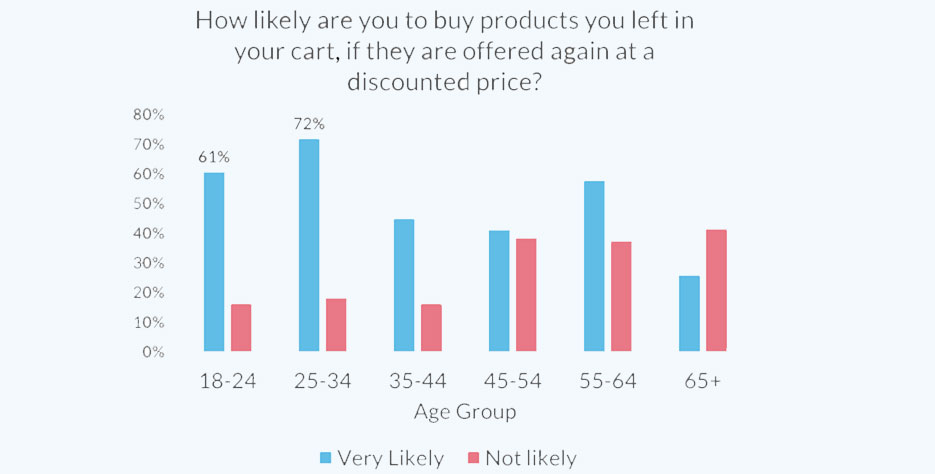
If you’ve got an offer going on that you think might interest the customer, tell them about it. If you don’t,
could you create an offer just for them?

Avoid the hard sell
Never pressure customers or make them feel like they’re under some sort of obligation to buy — it can easily backfire. Introduce the idea of an upsell casually, and focus on the positives: how it will benefit the customer— not what they stand to lose without it.
If a customer says no, accept it and move on. Don’t push the issue or you risk losing the customer altogether.
Key Takeaway: Take the time to get to know each customer and assess their needs in order to suggest appropriate upsells.
7. Develop relationships by downselling
Downsell? As in, try to lower the value of a potential sale? Really?
Yes. Really.
“If a customer wants to buy something, and you believe a cheaper alternative would suit them better, take the hit on your revenue and speak up. Downselling like this can help a customer to trust you more. After all, you didn’t have to downsell, so why would you unless you were simply looking out for their best interests? This technique can greatly increase customer loyalty.” How To Leverage Live Chat for Marketing & User Acquisition, Sujan Patel
This loyalty-boosting, relationship-enhancing technique may stand to reduce your immediate revenue, but if the honesty and integrity you’ve shown to the customer keeps them coming back for more, it’s going to pay for itself in the long run (potentially many times over).
The idea is starting to sound a little more attractive now, right?
It gets even better.


Downselling also has the potential to secure you a sale you might have otherwise lost. Let’s say a customer is on the fence about whether or not to buy your cutting-edge toaster oven with a 2.3GHz quad-core processor, 5-inch touchscreen, and "full HD" camera embedded in the ceiling (yes, it’s really a thing).
They fire up your live chat because while they like the idea of the toaster oven in theory, they’re not sure if they really need all those state-of-the-art features, or if they can realistically afford to drop $1,500 on a small kitchen appliance.
To help them make up their mind, they ask you questions about the product, and after a few Q&As, you start to get the feeling they’re having second thoughts about the purchase.
You could at this point go for the hard-sell, and try to talk the customer back around. But we’d advise against this. If the customer starts to feel “pushed,” they can end the conversation with the click of a button, or by simply walking away. Even if you have their email address, any attempts to bring the customer back could well fall on deaf ears — after all, why would they want to come back for another potential hard sell?
So this is what you do instead:
You downsell. You ask the customer which of the toaster oven’s features are most important to them and you find them a more affordable product that still does everything they need it to. Then you clinch the deal by knocking an extra 10% off the price.
The customer converts and goes away happy.
Key takeaway: Instead of pushing the sale onto undecided customers, suggest a more affordable alternative that still meets all their needs.
8. Ask customers to engage with you on Social Media
“Don’t forget to boost your social. When your live chat representatives receive positive feedback from online visitors and customers, consider instructing your representatives (or sales people) to nicely remind your visitors to Like your Facebook page and leave a comment on it.” 5 Reasons Why Live Chat is The Untapped Potential for Your Business, Lior Levin


When a customer goes away from their Live Chat experience satisfied, that’s a great opportunity to ask them to share their experience on social media.
Consider saying something like:
‘We’re glad we could help you today! If you’d recommend us to your friends, please consider tweeting about the support you received today.’

But why stop there? If they do post about their experience, ask them to follow you on Twitter or like your Facebook page.
This provides you with:
- The chance to develop stronger relationships with those customers
- The chance to leverage additional channels in order to market to them and potentially drive sales in the future
This is great publicity if you can get it, but tread carefully. You don’t want customers to feel obligated to tweet about you, or worse — that they’re being pushed into it.
Key takeaway:Ask happy customers to follow you on social media and/or to share their positive experiences online.
9. Leverage your historical data
“Live chat software will allow you to store previous conversations. Utilize this feature by giving operatives time to scan through historical conversations with repeat customers.” How to Leverage Live Chat for Marketing & User Acquisition, Sujan Patel
Historical data gathered from previous chats can be leveraged by agents to tailor conversations to the customer, build rapport, and upsell.
Imagine a customer has a problem that hasn’t yet been resolved. If an agent can access details from previous conversations they will know this. Not only will this increase the speed at which the agent can deal with the query, but it’s going to make the customer feel valued, too.
You can hand your agents even more power and influence if they’re also able to access other details of the customer’s history with the company, their purchase history being an important one. The best way to implement this is to integrate your live chat into your CRM.
Let’s put this into context.
Imagine you’re a company that supplies home appliances and accessories. An agent enters into a live chat with a repeat customer and at the same time can view that customer’s purchase history. They can see that a year ago the customer bought a pack of vacuum bags, and they take a guess that the customer might need more bags — if not now, then soon. The agent now has the opportunity to upsell.

“I can see that about a year ago you bought some vacuum cleaner bags from us. Do you need some more? Would you like me to add the same ones you bought before to your order?”

Historical data can also help agents for SaaS firms in a similar manner. They can still upsell or downsell, even when there’s no physical product that needs re-ordering.
Let’s say the customer currently pays for an enterprise package, but the agent can see that the customer only utilizes the features and functionality of their starter package. This is a great opportunity to gain that customer’s trust and loyalty by suggesting they move onto the package that better fits their needs and is easier on their budget.
Sure, that means less revenue from that customer, but it’s worth. There’s a good chance your great service means they’ll stick around for longer. That means a higher customer LTV (lifetime value). It also boosts the odds that they will recommend you to others.
Key takeaway: Provide agents with transcripts for previous conversations or if possible, integrate your live chat into your CRM to give agents access to your customers’ complete histories.
10. Extend your live chat hours
“9am to 5pm business hours and availability from Monday to Friday may not be enough. If you really want to see an uptick in live chat conversions, you should offer it 24/7. If you don’t have in-house agents to handle the chat outside business hours, you can hire external agents to serve customers around-the-clock.” 7 Ways To Use Live Chat For Improved Conversions, Dan Virgillito
While all companies should make a point of being as available as they can, it’s B2C and SaaS companies that need to worry about this one the most.
Here’s why:
Do you work 9-5 (give or take an hour or so in either direction)?
Well...
So do most of your customers.
This is a problem for B2C companies that only want to be open during traditional business hours; most of your customers are going to be working then, too.


Historically this hasn’t been a huge problem for e-commerce companies. As long as your website is live and functioning, customers can buy around-the-clock. Problems only arise when a customer has a question and needs to speak to you.
If you weren’t available by phone after hours, there was always email. Was it inconvenient? Sure, but customers didn’t have quite the same expectations as they do today.
Can you afford to let that happen?
If you can’t provide 24/7 coverage for live chat, there are companies you can hire to manage it for you. Alternatively, consider extending your live chat outside of standard office hours, even if you can’t stretch it to 24/7. Aim to be online later rather than earlier, and for as long as possible.
SaaS companies share a similar problem. Many SaaS firms will have customers all over the world. How do you help those customers in significantly different time zones who run into problems, or who have sales-related questions, while you’re sleeping?
Are you losing sales because potential customers on the opposite side of the world are unable to talk to you in real time?
The same solutions apply. If you’re not able to provide 24/7 live chat coverage in-house, consider outsourcing it. The alternative — covering live chat for as long as possible — will help. Just consider the fact that the ability to provide live chat up until 11pm or even 12am your time might not help current and potential customers in all other time zones.
To alleviate these issues, you could:
- assess where your strongest markets lie and extend your live chat coverage accordingly (this might mean opening your live chat at 5am your time, for example, but closing it at 8pm), or
- include details of live chat open times for different time zones on your site (so customers don’t have to figure out for themselves when, in their time zone, you will be available).

Key takeaway: Split test adding a short (three cells at most) pre-chat form that visitors have to complete before commencing a chat. Note that this will likely reduce the number of live chats visitors initiate - that’s okay, so long as your conversion rate increases at the same time.

11. Display a picture of the agent
“Customers want to talk to real humans, not robots. Train your agents to personalize their interactions with the visitors. Also, it is viable for the chat agent to have a small thumbnail in the chat screen somewhere so that people can see who they’re talking to.” 7 Ways to Improve Live Chat Conversions, Dan Virgillito
It’s no secret that faces have an important role to play in social interactions. It makes absolute sense, then, that being able to see a picture of the agent customers are talking to will help them relate to that person and increase the trust they have in them and what they say.
This is a simple tactic that should help increase your conversions. Just ensure to use real photos of your agents. Stock photos won’t help and could even make things worse — eye-tracking studies have shown that stock photos are actively ignored.
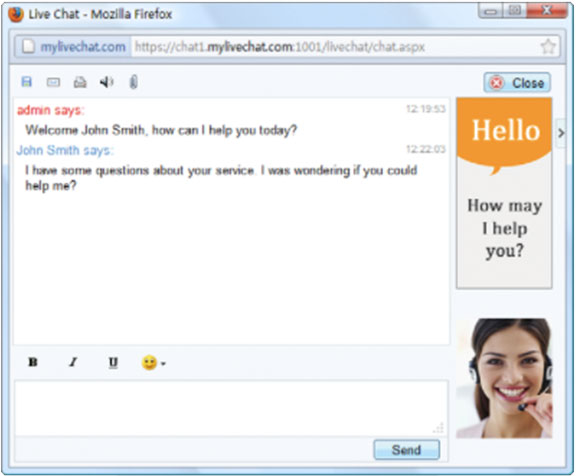
Image via Drupal: http://www.drupal.org/project/mylivechat
Key takeaway:Enhance your live chat with a real photo of the agent your customer is talking to.
12. Identify problems with your site
“Live chat analytics tools should enable you to see which pages of your site visitors are on when they begin to chat. "Why is this helpful?"Because… if an unusually large number of chats are stemming from a particular page of your site, this should signal that there’s an issue with that page (or a page linked to it).” How to Leverage Live Chat for Marketing & User Acquisition, Sujan Patel
There are many metrics and tools you can utilize to identify problem pages on your site (exit pages being an obvious one). Live chat, however, can be one of the strongest signs of a problem.
As mentioned above, if a number of live chat conversations are being initiated from a particular page of your site, there’s a good chance you have a problem.
Okay, so there are certain pages that you might expect to trigger more conversations than others — your checkout page, for one. Still, if customers are consistently asking questions on your checkout page, you have to ask why. Are your delivery charges unclear? Is there an issue with the total price customers are given?
Find out what the problem is, and fix it.

Key takeaway: Pay close attention to which pages are generating live chat conversations, and more importantly, what questions customers on those pages are asking. Then adjust those pages accordingly to help optimize them for conversions.
13. Use before a customer abandons their cart
Baymard Institute found that 67% of shoppers will abandon a cart without purchasing anything. Other sources report figures that are even higher— up to 75% in some cases. Needless to say, reducing your cart abandonment rate even slightly will make a big impact on conversions.
A popular way to address this is with abandonment emails. They look something like this:
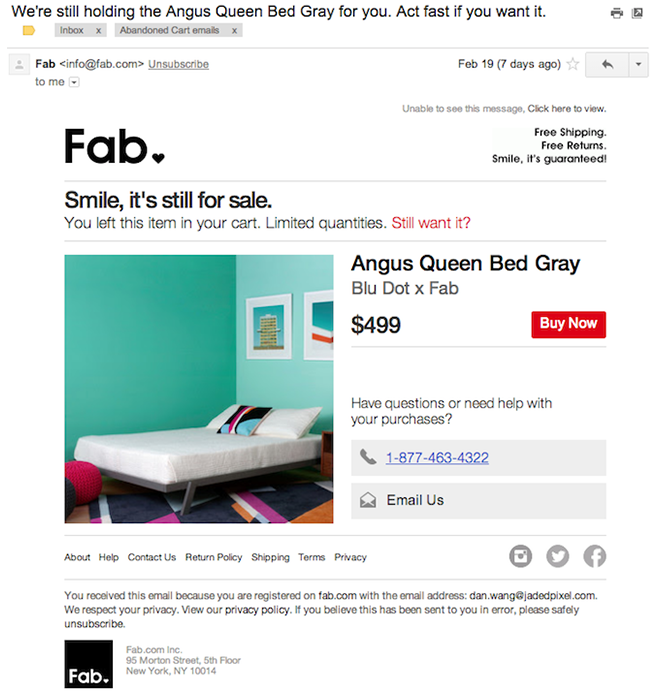
This acts as a gentle reminder to shoppers that they’ve left an item (or multiple items) in their basket.
Unfortunately, while they work, they don’t deal with the underlying reason why the visitor left the item in their basket.
According to research by Hubspot, 41% of "abandoners" leave their cart because of hidden shipping charges, and 42% leave because they need more information.

Abandoned cart emails can be successful to some extent, with 11% of them clicked, and a third of those clicks leading to a purchase. But that 4% of abandonment emails that lead to a purchase is a far cry from the 42% of people who just wanted more information.
Live chat can help you overcome this gap by offering a medium for talking to customers and finding out why they changed their mind. Do this with appropriately timed triggers (for example, when a customer goes to the checkout but then clicks back) and you will be in a very strong position to “save” many more customers than an abandonment email alone.
Let’s talk about triggers again for a moment. They’re seriously valuable— so long as they’re used correctly. Unfortunately, when utilized incorrectly, they can be a massive pain. You’ll understand this if you’ve ever been on a website with a live chat box that kept popping up, no matter how many times you clicked it away.
Don’t let that happen on your site.
In this case, the primary trigger for your live chat should be when a customer has been inactive on a checkout page for a certain amount of time (about 30 seconds is a good figure to work with).
Set custom greetings that are tailored to the situation at hand; in this case, for example, you should address the fact that it looks like the customer might be experiencing a problem with the checkout system. Your greeting should look something like this:
“Hi! It looks like you might be having a problem checking out. Can I help you with anything?”

This tactic should help save a number of carts that would otherwise have been abandoned. Of course, it’s never going to save them all— you’re still going to need to send out abandoned cart recovery emails. That’s fine— good, even— and you can still leverage the power of live chat in them, as you’ll see in the point just below.
14. Include live chat in abandonment emails
According to Empire Flippers, an abandonment email should do the following:
- “Ask the customer if they had a problem at checkout
- Tell the customer you’d love to have their business and that they can complete their order by:
- Returning to the store (e.g. by clicking this big attractive call-to-action button)
- Calling your customer support team on 555-555-5555
- Speaking directly to your live chat agents by clicking here
- Contacting your customer support team using email by replying to the message you’ve sent to them
- Make clear to the customer that their checkout will be saved for at least a week (ideally a lot longer), and that they can return to complete their checkout anytime.”

If a customer has abandoned their cart and left your site without utilizing live chat, you can still leverage the tool by including a link in your abandonment emails that immediately takes the customer back to your site and launches a chat window.
This is ideal for the customer because it provides an alternative medium for asking questions should they not want to speak on the phone or wait for a reply to an email. It’s also fantastic for you, the company, because the easier you make it for your customers to communicate with you, the greater the chance they will speak up. That, in turn, gives you the chance to figure out if there’s something you can do to “save” the sale.
You can also use live chat to complete a sale on behalf of the customer.
Key takeaway: Include a link to live chat in all cart abandonment emails and state briefly how the customer might use it, e.g, to let you know why they abandoned their purchase (so you can see if there’s anything you can do to tempt them to complete it) or so you can finish putting the sale through on their behalf.

15. Offer live chat in multiple languages
“Being able to speak to someone in their own language establishes trust, which is including support.” What Language Barrier? 3 Tips for Providing Multilingual Customer Support, Jeff Mills
If you do business internationally, this one is pretty much essential. If a customer in another country is interested in your product but can’t clearly communicate their questions to your agents, you’re probably going to lose that sale.
But don’t worry; you don’t need to distribute a job ad for an experienced customer support agent who’s fluent in five languages.

You will probably have a limit on the number of languages you can offer support in. If this is the case, it makes sense to prioritize the top languages your visitors speak. You can access this information in Google Analytics under Audience > Geo > Language.
Key takeaway: Configure your live chat software to offer support in multiple
languages.
16. A/B testing
“With A/B testing, you can divert groups of users to different versions and precisely measure the impact of live chat on conversions. You can assess your chat provider and check how they compare with their competitors, in addition to optimising the design and conditions of how the chat is triggered.”
Every digital marketer should be continually running A/B tests in order to optimize the performance of the site (or sites) they’re responsible for.
Most elements of a website can be subjected to A/B tests, including
- site copy,
- meta descriptions,
- text used in CTAs,
- the color of CTAs,
- the size of CTAs, and
- the position of CTAs.

That’s just to name just a few. Live chat is no exception.
Let’s look at some A/B tests you can use to inform changes that will help you optimize your live chat for conversions.
- GreetingsSplit test different greetings to discover what sort of language makes visitors more likely to respond.
- ColorTry changing the color of the live chat button visitors need to press to activate a chat.
- PositionMove the position of your live chat button around the page. Does it get more attention at the top or the bottom of the page, or on the left or the right?
- Pre-chat formsTest whether your live chat performs better with or without pre-chat forms.
- CTAPlay around with the wording you use for the button’s CTA.
- Greeting trigger variablesTest different variables for the triggers you use. For example, find out whether your chat performs better after a longer or shorter time delay, or whether a customer should have visited the same page two or three times before the chat appears.
Key takeaway: Utilize A/B tests to guide changes that will help you increase the number of customers that use the live chat function, and where they are in the buying cycle when they do.

17. Live chat for growth hacking
Growth hacking is a common term these days, and why wouldn't it be? What’s not to like about implementing innovative techniques that help to scale the growth of your business?
Growth hacking is great, but amidst all the noise of boundary-pushing, state-of-the-art ideas and strategies, something seems to have been forgotten:
How much you stand to gain from simply talking to your customers.

The best marketers are not the most experienced or the ones with the most creative ideas. They are the ones who take the time to really learn about their customers.
The talking-to-your-customers “hack” is about uncovering priceless information and raw, hard data that can help you create campaigns that resonate more deeply with your target audience.
Want to growth hack your business? Start by talking to your customers. One way to do that is with live chat.
Here are some ways you can leverage the conversations you have on live chat for accelerated growth.

Help your customers
become brand advocates
An advocate is a customer who has gone above and beyond loyalty. They’re the customers who feel such a strong affiliation with your brand that they actively encourage others to become customers, too.
Unfortunately, brand advocates aren’t born; they’re made. You have to work for them.
There are lots of tools you can use to turn customers into advocates
— live chat being one— but the overriding lesson in how to turn customers into advocates is this:
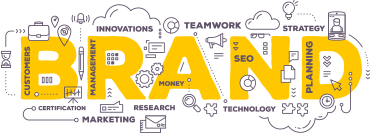

To do that, you have to do much more than meet your customer's expectations; you have to exceed them in ways that surprise the customer.
Live chat can help you do this.
Don’t just answer your customers’ questions or resolve issues to their satisfaction. Take the service you provide to the next level.
Let’s see an example.
When a customer contacts you about a problem over live chat, don’t do the bare minimum. Empower your agents with the authority to go above and beyond— to do whatever it takes (within reason) to make your customers happy.

Ask for referrals
Referrals are one of the oldest growth hacks in the book. They’re almost single-handedly responsible for the success of Dropbox. Interestingly, Dropbox’s first marketer, Sean Ellis, is widely accepted as being responsible for the term “growth hacking.”
There are a lot of ways to get referrals for your business. One very simple way is to ask for them.
You can do this using live chat, so long as you
- know who to ask for a referral (and who not to), and
- offer an incentive to sweeten the deal.

Not every customer will appreciate being asked for a referral.
Let’s imagine a customer pops up on live chat to complain that they’ve been overcharged. You solve the problem by refunding the overcharged amount, and as an apology you even add on a little extra.
Should you ask that customer for a referral?
Probably not.
Sure, they’re going to be satisfied with the way their problem’s been resolved. They’re definitely not unhappy, but there might be a nagging concern in the back of their mind that this could happen again.
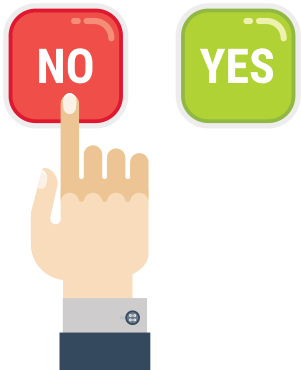
So long as that customer is concerned the issue might be due for a repeat, they’re unlikely to want to send their friends, family, or colleagues your way.
Now let’s imagine a customer comes onto live chat because an item they really want is out of stock. You can’t send the customer the item right away, but you instead arrange for the purchase to be completed by you, and the item sent to the customer the moment it arrives back in. You also knock 10% off the price as an apology for the inconvenience.
Will this customer be willing to refer people to you? It’s quite likely. But the way you ask for a referral, and what you offer in return, will affect how successful this strategy is.
Don’t just say,


“Thanks for contacting us today! We’d love it if you could tell your friends and family about us!”

or even,


“Thanks for contacting us today! Would you be kind enough to tell your friends and family about us?”

Even when posed as a question, the customer has no motivation to do anything about it. They might say “yes,” but do you honestly think they will do it?
Instead, try something like this:


“Thanks for contacting us today! If you have any friends or family that you think might like our products, it would be great if you could tell them about us! Just pass this code onto them (BHG65) and they will get 20% off their first purchase. Each time they use it, we will also credit your account with $5. How does that sound?”


Look for trends in your chat archives
We covered chat transcripts earlier. They’re a valuable tool for keeping records of communications with customers, but they can do much more than that.
Analyzing your transcripts can help you learn the following:
- Which questions your customers are asking most frequently
If these questions aren’t being answered on your website, update it. Next, create automated answers that agents can use to save time when they’re asked these questions.

- How your customers are asking questions
The phrasing they use can contain valuable keywords that you can use to optimize your site further. For example, let’s say you sell (among other things), fridges. On your fridges category page you answer the question “what do the energy ratings on fridges mean?” but in your live chat you notice customers asking “what’s the minimum energy rating I should be looking for when buying a fridge?”.
This is essentially the same question— in both cases the customer is trying to figure out what energy rating they should be looking for— but the way it’s phrased is very different and hiding potentially valuable keywords (in this case I’d be looking at “minimum energy rating”). Enhance your landing pages by including those keywords in your copy.
- Your customers’ most common pain points
Do customers keep running into the same issues on your site? Maybe they can’t find details of delivery costs or the add-to-cart button.
If it’s happening regularly, the problem isn’t them— it’s you. Make changes to address the issues your customers keep running into.
Roundup of Resources
We’ve linked to tons of great resources in this article. To save you some time sorting through them, here are some of the best you might want to check out:
- How Live Chat on Your Website Can Maximize Conversions
- 9 Companies Using Live Website Chat in a Creative Way
- Are Pre-Chat Forms a Good Idea for Live Chat? (Quora thread)
- 25 Customer Chat Tips to Reassure and Nurture Your Online Customers
- How to Make Live Chat Convert
- How To Leverage Live Chat for Marketing & User Acquisition
- 5 Unconventional Ways Live Chat Improves Conversion
- 7 Ways To Use Live Chat For Improved Conversions
Best Practices for Running a Live Chat
- Empathize: Ask your agents to imagine themselves in the customer’s shoes.
- Use positive language: Avoid using negative words like “no” and “don’t.” Find an alternative way to phrase what you want to say, using words with positive connotations.
- If in doubt, ask questions: Always double-check with a customer if you’re unsure about what they want, or what they’re asking.
- Don’t handle too many chats at once: Cap at five per agent at a time.
- Communicate: Let the customer know what’s going on. If you have to go away to find the answer to a question, tell them.
- Don’t close a chat prematurely: Ensure the customer’s query has been resolved to their satisfaction, and that they have no more questions.
- Provide a transcript: Offer customers the chance to have a full transcript of the conversation emailed to them.
Practical Tactics to Try
1. Create proactive greetings
Send proactive (automated) greetings in accordance with how a customer arrived on your site or how they’ve interacted with it since. These might include:
- Time on site : a greeting that pops up for every customer after they’ve spent a set amount of time on the site.
- Current URL : appears when a visitor lands on a particular page of the site.
- Returning visitor : appears when a previous visitor returns to the site.
- Time on page : appears after a certain amount of inactivity on a particular page.
- Geolocation : appears only to visitors within a certain location.
- Pageviews : appears when a visitor keeps returning to the same page.
- Referrer : appears when someone arrives on your site via a particular referral link.
- Visited URLs : appears when a visitor lands on every URL in a group of related pages.
2. Use simple pre-chat forms
Add in a short form that visitors have to complete before a live chat commences. You might want to split test this one.
3. Increase your response time
Try to reply to all messages within 30 seconds. You can speed up response times by
- using pre-written replies that answer common queries and that agents can send using shortcodes;
- transferring chats when necessary, e.g., if an agent is too busy or lacks the knowledge to answer a question quickly;
- limiting the number of chats each agent is responsible for, with an absolute maximum of five at a time; and
- train your agents properly, because the more they know, the faster they can deal with queries.
4. Display unsent messages to agents
Use a live chat indicator service that shows what the customer is typing, before they’ve hit send.
5. Have meaningful conversations wwith customers
Take the time to build relationships and ensure customers are getting all the information they need.
6. Boost profits with upsells
Add in a short form that visitors have to complete before a live chat commences. You might want to split test this one.
- Make the customer comfortable : This builds a rapport that makes customers more receptive to upsells.
- Get to know your customers’ needs : It will help you find appropriate upsells. You’re wasting everyone’s time if you offer a product that doesn’t fit their needs.
- Promote a sale, or offer an exclusive discount just for them.
- Be casual: Never make the customer feel pressured.
7. Develop relationships by downselling
Gain customers’ trust by suggesting a more affordable alternative to a product they were unsure about buying.
8. Ask customers to engage with you on social media
Ask happy customers to follow you on social media and/or share their experiences online.
9. Leverage your historical data
Provide agents with transcripts from previous conversations, and if possible, offer agents complete access to a customer’s history by integrating live chat into your CRM.
10. Extend your live chat hours
The longer, the better. Consider that you might have customers in different time zones, and remember that your customers are probably working when you are.
11. Display a picture of the agent
Display it in the chat box. Just ensure that it’s a real picture— stock photos are a big no!
12. Identify problems with your site
If live chat is being activated more than expected on a particular page of your site, there’s probably a problem. Fix it.
13. Use before sending out an abandonment email
Try to “save” customers that are showing signs of abandoning their cart by activating a chat with visitors who have spent longer than expected on your checkout page.
14. Offer live chat in multiple languages
Most live chat services offer this option. Choose the top languages your visitor base uses. You can find out what those languages are in Google Analytics.
15. A/B test everything
It will help you make changes that will enhance how many people use your live chat service, and how effective it is at driving conversions.
The tests you perform might include (but probably won’t be limited to)
- greetings,
- pre-chat forms,
- color,
- CTA,
- position, and
- greeting trigger variables
16. Live chat for growth hacking
- Help your customers become brand advocates by going above and beyond to “delight” them.
- Ask for referrals: Leverage happy customers by asking if they would refer you to friends, family, or colleagues.
- Look for trends in your chat archives: They can help you identify common customer pain points, frequently asked questions, and keywords you can use to optimize your site.


 More chats
More chats

